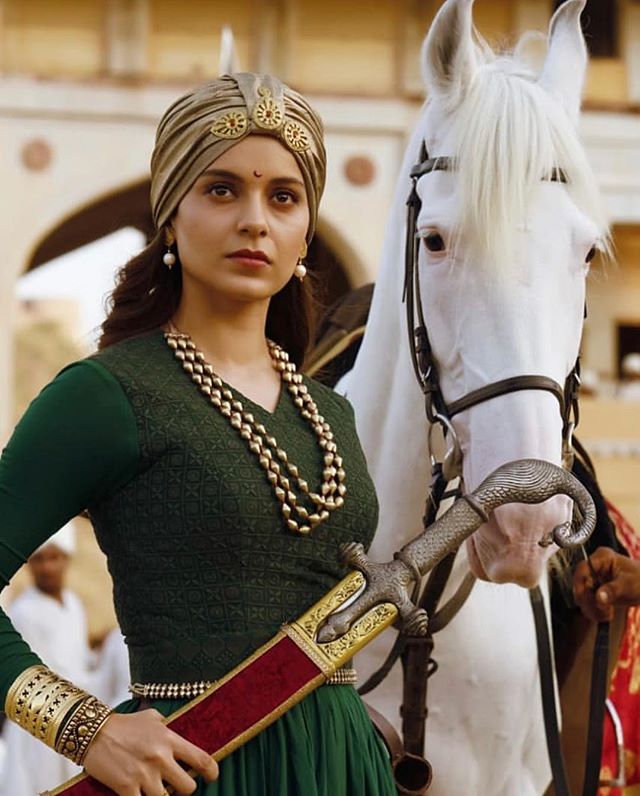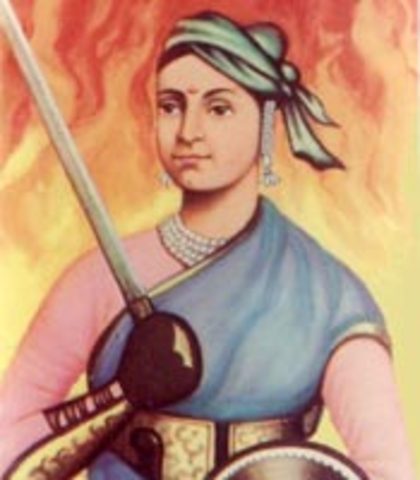Early Life and Ascendancy to Power:
Born as Manikarnika Tambe on November 19, 1828, in Varanasi, she was fondly known as Manu. Her early years were marked by a robust education that included horse riding, fencing, and shooting—skills that were unconventional for women of her time. Her father, Moropant Tambe, ensured she was brought up with a strong sense of independence and courage.
In 1842, Manu married Maharaja Gangadhar Rao of Jhansi and was named Rani Laxmi Bai. Her life took a dramatic turn with the death of her husband in 1853. Without a biological heir, the British East India Company refused to recognize the adopted son, Damodar Rao, as the legitimate heir, citing the Doctrine of Lapse. This set the stage for the legendary revolt that was to follow.

The Revolt of 1857: A Turning Point:
The year 1857 saw the eruption of the First War of Indian Independence. Rani Laxmi Bai emerged as a key leader in the rebellion against British rule. Her leadership was not just a demonstration of her military prowess but also her strategic acumen. Under her command, Jhansi became a formidable fortress of resistance.
Despite facing overwhelming odds, she inspired her soldiers with her rallying cry: "Main apni Jhansi nahi doongi" (I will not surrender my Jhansi). The siege of Jhansi in 1858 saw her fighting valiantly to defend her kingdom. Her defiance and refusal to surrender made her a symbol of resistance.
The Battle and Legacy:
On June 18, 1858, Rani Laxmi Bai faced her final battle near Gwalior. Clad in warrior attire, she fought with unparalleled courage until her last breath. Her martyrdom immortalized her as a beacon of courage and freedom. Sir Hugh Rose, the British General who faced her, later remarked, "Here lay the woman who was the only man among the rebels."
Rani Laxmi Bai's legacy transcends her time. She remains an enduring symbol of resistance against oppression and a source of inspiration for generations. Her life has been immortalized in numerous poems, songs, and narratives, each celebrating her undying spirit and commitment to her cause.

Commemoration and Reverence:
Every year, on her punyatithi, India pauses to pay homage to Rani Laxmi Bai. Ceremonies, cultural programs, and educational activities are organized across the country to remember her contributions and to educate young minds about her heroic deeds. Statues and monuments dedicated to her stand as a testament to her enduring legacy.
In the modern era, where women's empowerment and equality are pressing issues, Rani Laxmi Bai's life serves as a reminder of the power of resilience and determination. Her story inspires not just women but everyone to stand up against injustice and to fight for what is right, no matter how insurmountable the odds may seem.
Conclusion:
As we remember Rani Laxmi Bai on her punyatithi, we honor not just a queen but a warrior who epitomized the spirit of freedom and justice. Her life and sacrifice continue to resonate deeply within the Indian psyche, reminding us of the strength that lies in courage and conviction.
On this day, let us draw inspiration from her extraordinary
life and strive to uphold the values she fought for. Jai Hind!

